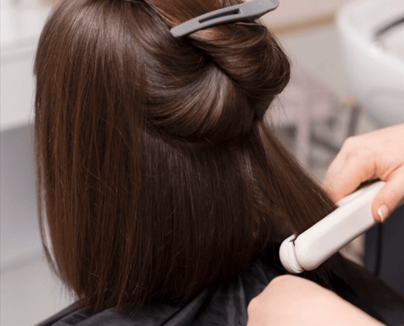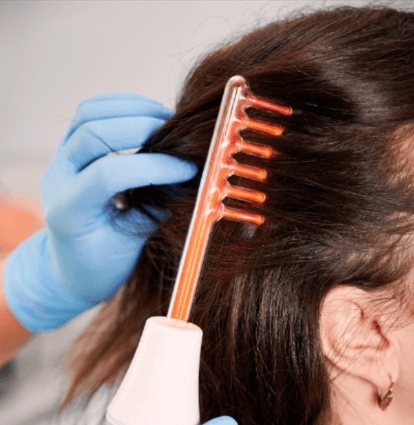Melasma is a common and often stubborn skin condition that affects people around the world—especially those with medium to darker skin tones. For many international patients, Korea has become a top destination for melasma treatment, thanks to its cutting-edge dermatology clinics, tailored protocols for Asian and ethnic skin types, and medically integrated beauty care.
In this comprehensive guide, we break down everything medical tourists need to know: from what melasma is, to how it’s diagnosed and effectively treated in Korea.
🌞 What Is Melasma?
Melasma is a chronic skin pigmentation disorder characterized by symmetrical brown or grayish patches, usually on the face. It most commonly affects:
- Cheeks
- Forehead
- Upper lip
- Nose bridge
- Chin
🧬 What Causes Melasma?
Melasma results from overactive melanocytes (pigment-producing cells). Triggers include:
- UV exposure
- Hormonal changes (pregnancy, oral contraceptives, HRT)
- Genetics
- Heat and visible light
- Certain medications or cosmetics
⚠️ It is not a result of poor hygiene or diet, and cannot be cured by whitening creams alone.
✈️ Why Medical Tourists Choose Korea for Melasma Treatment
South Korea is a global leader in dermatology and aesthetic medicine. Here’s why melasma patients from Southeast Asia, the Middle East, North America, and Europe travel here:
✅ Expertise in Treating Asian and Ethnic Skin Types
- Korean clinics are deeply experienced in treating Fitzpatrick skin types III–V, which are more prone to pigmentation disorders and post-inflammatory hyperpigmentation (PIH).
✅ High-Tech, Non-Aggressive Laser Devices
- Clinics use Pico lasers, Spectra XT, and low-fluence Q-switched Nd:YAG lasers—designed for safe, gradual pigment reduction without damaging the skin barrier.
✅ Multi-Modal Treatment Plans
- Korean dermatologists use a customized, layered approach: lasers, peels, mesotherapy, oral supplements, and personalized skincare.
✅ Convenience for Foreigners
- Many top clinics offer multilingual consultation services, airport transfers, and short-term treatment plans for visitors staying 5–14 days.
🧪 Step 1: How Korean Clinics Diagnose Melasma
Top Korean dermatology centers follow a comprehensive diagnostic process:
1. Detailed Skin Consultation
- History of sun exposure, medications, hormonal triggers, previous treatments.
2. Wood’s Lamp Examination
- Identifies if melasma is epidermal, dermal, or mixed (crucial for choosing the correct treatment method).
3. Advanced Imaging (e.g., VISIA, OBSERV)
- Maps pigmentation, vascular components, and underlying damage invisible to the naked eye.
📝 You may also be evaluated for similar conditions like PIH or lichen planus pigmentosus—commonly mistaken for melasma.
🔬 Types of Melasma (Diagnosed in Korea)
| Type | Features | Treatment Response |
|---|---|---|
| Epidermal | Surface-level dark patches | Best response to topical agents and lasers |
| Dermal | Deeper pigmentation, blue-gray | Slower response, requires advanced lasers |
| Mixed | Combination of both | Most common type |
| Vascular Melasma | With visible redness or veins | Requires anti-inflammatory or vascular-specific treatments |
💡 Step 2: How Korean Clinics Treat Melasma
Treatment in Korea is holistic and incremental. Here are the most common therapies:
🔹 1. Laser Toning (PICO or Q-switched Nd:YAG)
- Low fluence, multiple passes
- Gently breaks melanin without damaging healthy skin
- Usually done weekly or biweekly, even for short-term visitors
Popular devices: PicoPlus, PicoSure, Spectra XT
🔹 2. Oral Tranexamic Acid (TXA)
- Common prescription in Korean clinics for melasma
- Reduces pigmentation by targeting the vascular component and blocking melanin activation
- Often combined with laser for enhanced results
🔹 3. Mesotherapy / Skin Boosters
- Microinjections of:
- Tranexamic acid
- Vitamin C
- Glutathione
- Brightens skin, reduces inflammation, and supports even tone
- Minimal downtime, suitable for short-stay medical tourists
🔹 4. Custom Topical Prescriptions
- Hydroquinone, tretinoin (under doctor supervision)
- Non-irritating Korean formulas: niacinamide, licorice extract, arbutin
🔹 5. Brightening Peels (Optional)
- Mandelic acid or lactic acid peels
- Lightens pigmentation and improves absorption of skincare products
- Not always suitable for active melasma—used carefully
🧴 Step 3: Home Maintenance Is Key (Even for Tourists)
Before returning home, most Korean clinics provide a take-home regimen:
- Medical-grade sunscreen (SPF 50+/PA++++)
- Barrier-strengthening moisturizers
- Brightening serums with TXA, vitamin C, or niacinamide
Many clinics also offer global shipping for follow-up skincare or remote consultations.
🏥 Recommended Korean Clinics for Medical Tourists with Melasma
| Clinic Name | Location | Specialty | Notes |
|---|---|---|---|
| Banobagi Dermatology | Seoul (Gangnam) | Deep melasma + post-laser care | English-speaking staff |
| Oracle Skin Clinic | Nationwide | TXA protocols + melasma lasers | Locations in Seoul, Busan, Jeju |
| Leaders Dermatology | Sinchon | Sensitive skin, first-time laser patients | Popular with Southeast Asian tourists |
| THE ME Clinic | Myeongdong | Short-term packages for visitors | Known for custom mesotherapy |
| MUSE Clinic | Gangnam | Affordable treatments + skincare | Offers same-day consultation & treatment |
🧳 What to Expect During a Melasma Medical Tour in Korea
| Step | What Happens |
|---|---|
| 1. Online Consultation | Send photos and medical history before arrival |
| 2. In-Person Diagnosis | Advanced analysis and personalized plan |
| 3. Treatment Sessions | 2–5 sessions over 5–14 days |
| 4. Post-Treatment Care | Instructions, skincare set, and online follow-up |
| 5. Return Home | Optional remote check-ins or additional product delivery |
✈️ Tips for Medical Tourists with Melasma
- Avoid strong sun exposure 1 week before and after treatment
- Schedule 2–3 days of downtime if undergoing mesotherapy or laser
- Bring current skincare products for review by your Korean dermatologist
- Use hats, UPF scarves, and high SPF sunscreen daily, even while sightseeing
💬 Final Thoughts: Is Korea the Right Choice for Melasma Treatment?
If you’ve struggled with melasma and are seeking a science-backed, aesthetic-friendly treatment approach, Korean clinics offer:
✅ State-of-the-art technology
✅ Personalized protocols for different skin tones
✅ Convenience and comfort for medical travelers
✅ Long-term skin tone management
Whether you’re planning a short skin treatment trip or combining it with a vacation, Korea is one of the most advanced and accessible destinations for melasma care.




